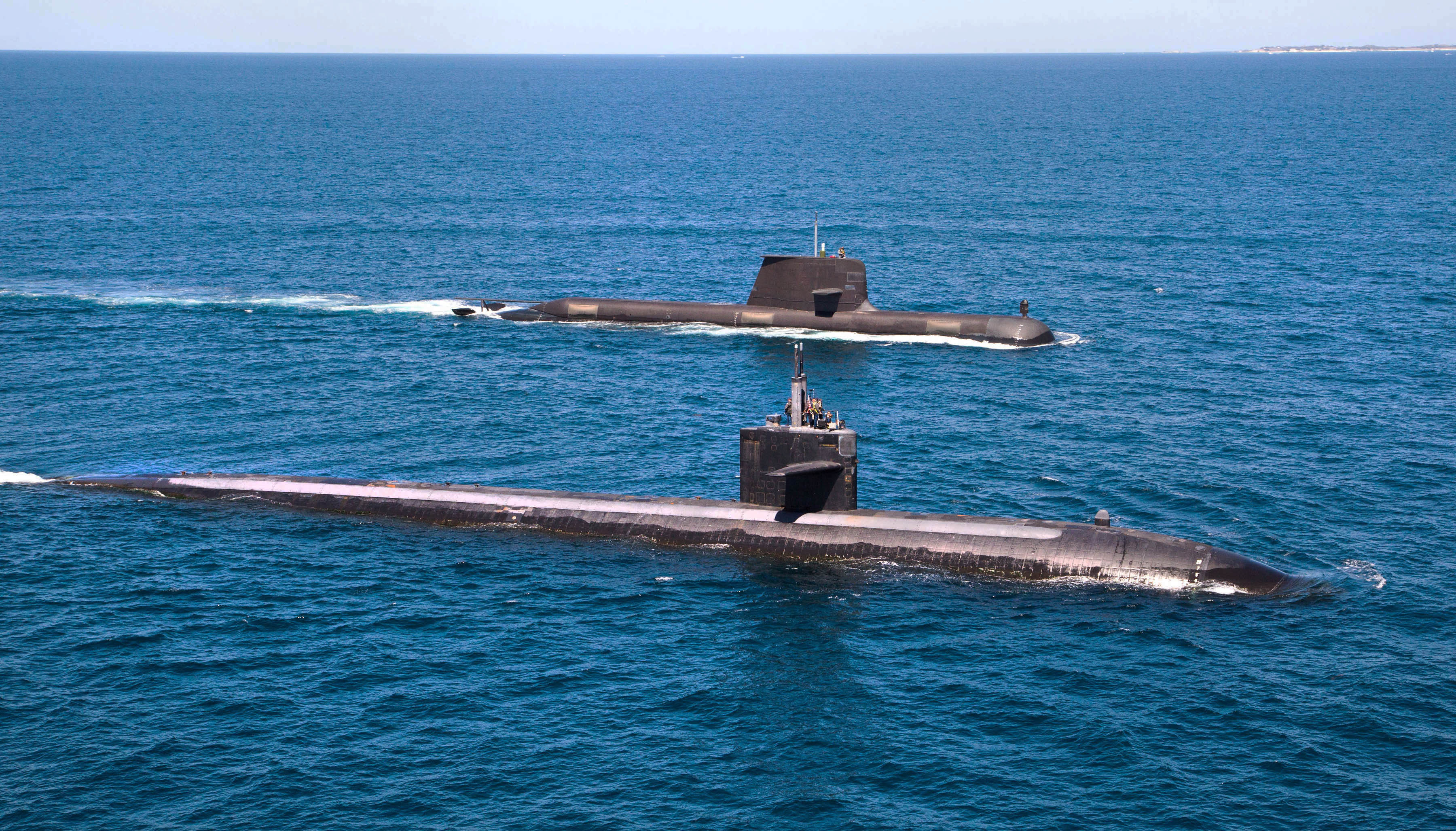
The Royal Australian Navy will establish a new submarine base on its east coast to host its planned nuclear-powered submarines and to complement the existing Fleet Base West, Garden Island submarine base, Australian officials said on Monday. The government is considering three possible locations for the new base – Brisbane, Newcastle and Port Kembla – down from 19 initial candidates
Australian Prime Minister Scott Morrison made the announcement in a virtual address to the Lowy Institute, followed by a joint media release with Defence Minister Peter Dutton. Morrison stated in the address that the decision was made to support basing and disposition of the future nuclear-powered submarines, but at the same time stressed that the new base would not replace any existing Fleet Base West facilities, “This is about additional national capacity, not relocating any existing or planned future capacity for Fleet Base West. Fleet Base West will remain home to our current and future submarines, given its strategic importance on the Indian Ocean” said Morrison.
Morrison said the decision to establish an east coast submarine base has been many years in the making as part of Australia’s transition from the Collins-class submarine, and that establishing a second submarine base on the east coast will enhance Australia’s strategic deterrent capability; bring advantages in operational, training, personnel and industrial terms; and enable regular visits from of U.S. and U.K. nuclear-powered submarines.
The Fleet Base West will also receive significant funding to support Australia’s nuclear-powered submarines and enable regular visits from U.S. and U.K. nuclear-powered submarines, according to the media release. It also stated that the Australian Department of Defence estimates that more than AUD $10 billion will be needed for facility and infrastructure requirements to prepare for the future nuclear-powered submarines, including the new east coast submarine base. It also stated that Defence will engage with state and local governments to determine the optimal site, which will be informed by the ongoing work of the Nuclear Powered Submarine Taskforce. This initial work is expected to be completed by the end of 2023.
In an interview with ABC Radio on Monday, Dutton said that Australia expects a future influx of ship maintenance and support works throughout Australia, not only from Australian ships, but also partner nation ships coming into Australia.
“We’re talking not only about Australian submarines, we’re also talking about significant visits to our country from the Astute-class [submarines]. We had an Astute-class in [Western Australia] only about two months ago. We have the prospect, I think, of significant visits from the United States fleet – not just their submarines – and also the Japanese visits, the British visits of their frigates. I think you’ll see more activity from the Indians. I just think this is the new norm, tragically, because of the uncertainty within the Indo-Pacific and we’ll see that ramp up over the next couple of years,” he said.
Dutton dismissed the prospect of an intermediate submarine class to bridge the gap between Collins class and the future nuclear-powered submarine, saying it was not feasible, “What we don’t want to do is get into an immature design of a third class of subs. Navy is going to be stretched to run the Collins-class into the mid-2040s, on top of the new nuclear-powered submarines. To have a sort of son of Collins or a daughter of Collins, as it’s been referred to, so a third class of submarines, I just don’t think it’s feasible,” he said, adding that a new class would take years to design and build.
Dutton said that buying an existing nuclear-powered submarine design was not possible given that current nuclear-powered submarine construction capacity globally is now at full capacity. He added that the planned upgrades of the Collins would be sufficient until the new nuclear-powered submarines entered service, which he believes will be earlier than the general estimate of a 2040 timeframe.
“There’s been speculation around the 2040s. That’s not my expectation. I think we can build and we can put into service much sooner than the 2040s. But we’re going through an 18-month process at the moment with both the United States and the United Kingdom talking about the transfer of that [intellectual property], talking about the way in which we can build up that capability”, said Dutton who also stated that there would be more to say on the matter in the middle of this year with the next stage of the [Australia, U.K. and U.S.] discussions.
In other developments, the People’s Liberation Army Navy (PLAN) surface task group involved with the alleged lasing of an Australian P-8 Poseidon maritime patrol aircraft on Feb. 17, returned to the military port of Zhanjiang, Guangdong on Thursday last week. The task group is comprised of the destroyer CNS Hefei (174), frigate CNS Huangshan (570), amphibious transport dock CNS Jinggang Shan (999) and replenishment ship CNS Honghu (963). China’s Xinhua news agency reported that the group left Zhanjiang on Feb. 5 and successfully completed combat readiness patrols and offshore training missions in the South China Sea, East Indian Ocean, Western Pacific and other waters. Xinhua also added that the training was a routine part of Southern Theater Command’s annual plan, did not target any specific goals and conformed to relevant international law and accepted practice.
Japan also reported the sighting of another PLAN surface group on Friday, stating that the destroyer CNS Urumqi (118), frigate CNS Yantai (538) and replenishment ship CNS Taihu (889) were sighted 110 km east of Miyako Island and traveled north in the Miyako Strait between Miyako Island and Okinawa heading into the East China Sea. The release by the Joint Staff Office of the Japan Self Defense Force also stated that the replenishment ship JS Hamana (AOE-424) and the minesweeper JS Ukushima (MSC-686) conducted surveillance on the PLAN ships.





